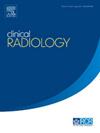Clinical feasibility of fully automated three-dimensional liver segmentation in low-dose chest computed tomography (CT) for assessing hepatic steatosis: an alternative to abdominal CT
IF 1.9
3区 医学
Q2 RADIOLOGY, NUCLEAR MEDICINE & MEDICAL IMAGING
引用次数: 0
Abstract
Aim
The aim of this study was to evaluate the clinical feasibility of fully automated three-dimensional (3D) liver segmentation using low-dose chest computed tomography (LDCT) as an alternative to nonenhanced abdominal computed tomography (AbCT) for the assessment of hepatic steatosis (HS).
Materials and Methods
We retrospectively analysed 642 adults with both LDCT and nonenhanced AbCT at 120 kVp. Using a fully automated 3D segmentation algorithm; the mean volumetric computed tomography (CT) attenuation of the liver was measured using both LDCT (for the included liver volume) and AbCT. The LDCT- and AbCT-measured liver Hounsfield unit (HU) values were compared using the intraclass correlation coefficient (ICC) and linear regression analysis. The correlation between LDCT- and AbCT-estimated HS grades using predefined cut-offs of 57 HU for mild HS and 40 HU for moderate HS was assessed using kappa statistics. Diagnostic performances of LDCT-measured HU were assessed using receiver operating characteristic (ROC) curve analysis with AbCT-based HS grades as a reference.
Results
LDCT-measured liver HU showed excellent absolute agreement (ICC = 0.961, P<0.001) and a significant correlation (adjusted R2 = 0.857) with AbCT-measured values. Subjects were categorised as normal/mild/moderate-to-severe HS in 322/283/37 by LDCT and 321/283/38 by AbCT, respectively, with significant correlations found for detecting HS (unweighted-κ = 0.741) and for grading HS (weighted-κ = 0.755). When using AbCT as a reference, the LDCT-measured liver HU resulted in an area under the ROC curve of 0.925 for mild HS and 0.986 for moderate HS.
Conclusion
The LDCT-derived volumetric liver HU and HS grading based on these measurements strongly aligned with AbCT-based evaluation, indicating the potential of LDCT as an AbCT alternative in HS screening.
低剂量胸部计算机断层扫描(CT)用于评估肝脏脂肪变性的全自动三维肝脏分割的临床可行性:替代腹部CT
目的本研究的目的是评估使用低剂量胸部计算机断层扫描(LDCT)作为非增强腹部计算机断层扫描(AbCT)评估肝脂肪变性(HS)的全自动三维(3D)肝脏分割的临床可行性。材料和方法我们回顾性分析了642例成人LDCT和非增强AbCT在120kvp。采用全自动三维分割算法;使用LDCT(包括肝脏体积)和AbCT测量肝脏的平均体积计算机断层扫描(CT)衰减。采用类内相关系数(ICC)和线性回归分析比较LDCT和abct测量的肝脏Hounsfield单位(HU)值。使用kappa统计评估LDCT和abct估计的HS等级之间的相关性,使用预先确定的临界值为轻度HS为57 HU,中度HS为40 HU。采用受试者工作特征(ROC)曲线分析,以abct为基础的HS分级为参考,评估ldct测量的HU的诊断性能。结果sldct测量的肝脏HU与abct测量值具有极好的绝对一致性(ICC = 0.961, P<0.001),且与abct测量值具有极显著的相关性(校正R2 = 0.857)。通过LDCT和AbCT分别将受试者分为正常/轻度/中度至重度HS(322/283/37)和中度至重度HS (321/283/38), HS检测(未加权-κ = 0.741)和HS分级(加权-κ = 0.755)具有显著相关性。以AbCT作为对照时,ldct测得的肝脏HU的ROC曲线下面积为:轻度HS为0.925,中度HS为0.986。结论基于这些测量的LDCT衍生的肝脏容量HU和HS分级与基于AbCT的评估高度一致,表明LDCT在HS筛查中具有替代AbCT的潜力。
本文章由计算机程序翻译,如有差异,请以英文原文为准。
求助全文
约1分钟内获得全文
求助全文
来源期刊

Clinical radiology
医学-核医学
CiteScore
4.70
自引率
3.80%
发文量
528
审稿时长
76 days
期刊介绍:
Clinical Radiology is published by Elsevier on behalf of The Royal College of Radiologists. Clinical Radiology is an International Journal bringing you original research, editorials and review articles on all aspects of diagnostic imaging, including:
• Computed tomography
• Magnetic resonance imaging
• Ultrasonography
• Digital radiology
• Interventional radiology
• Radiography
• Nuclear medicine
Papers on radiological protection, quality assurance, audit in radiology and matters relating to radiological training and education are also included. In addition, each issue contains correspondence, book reviews and notices of forthcoming events.
 求助内容:
求助内容: 应助结果提醒方式:
应助结果提醒方式:


